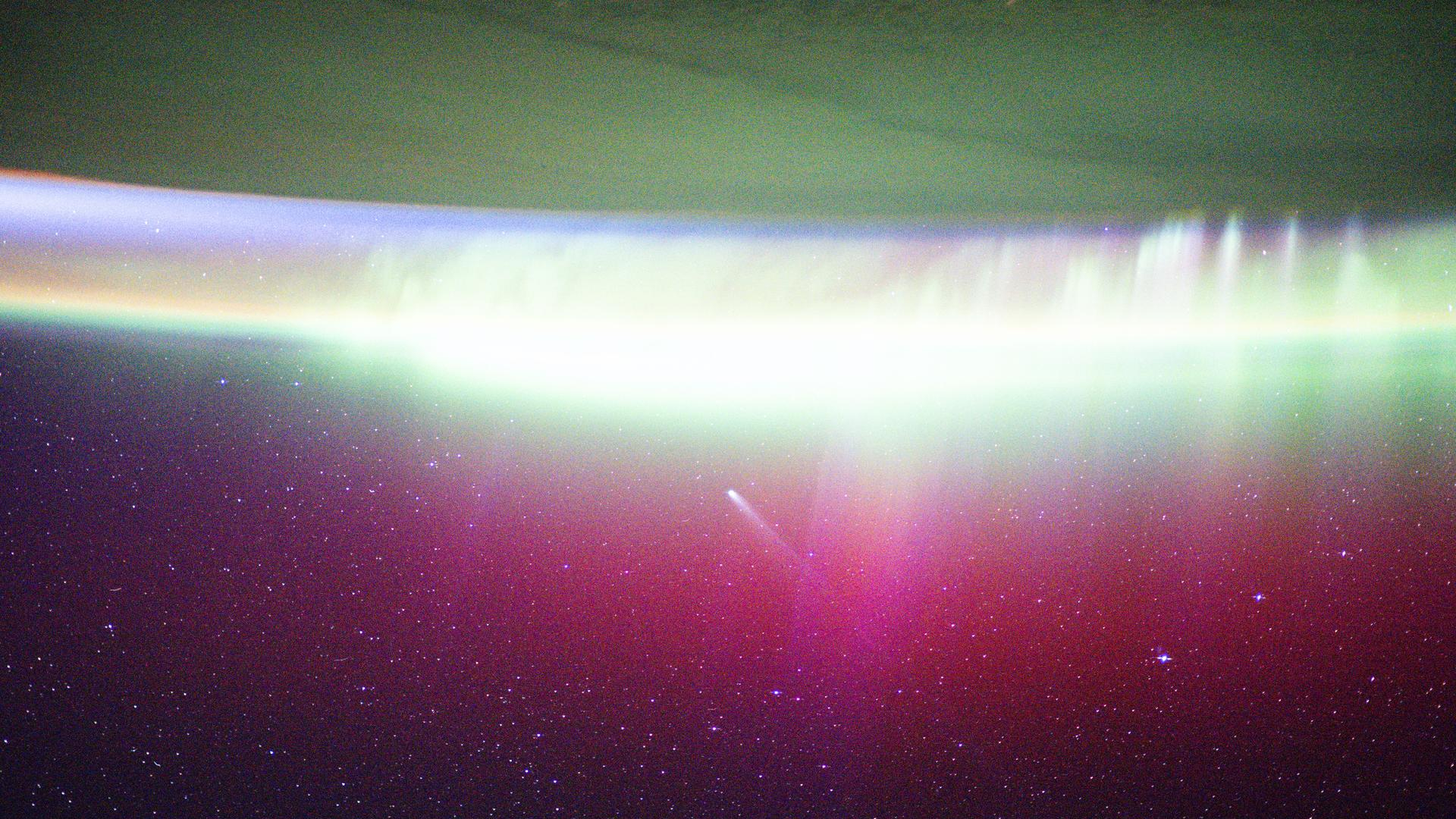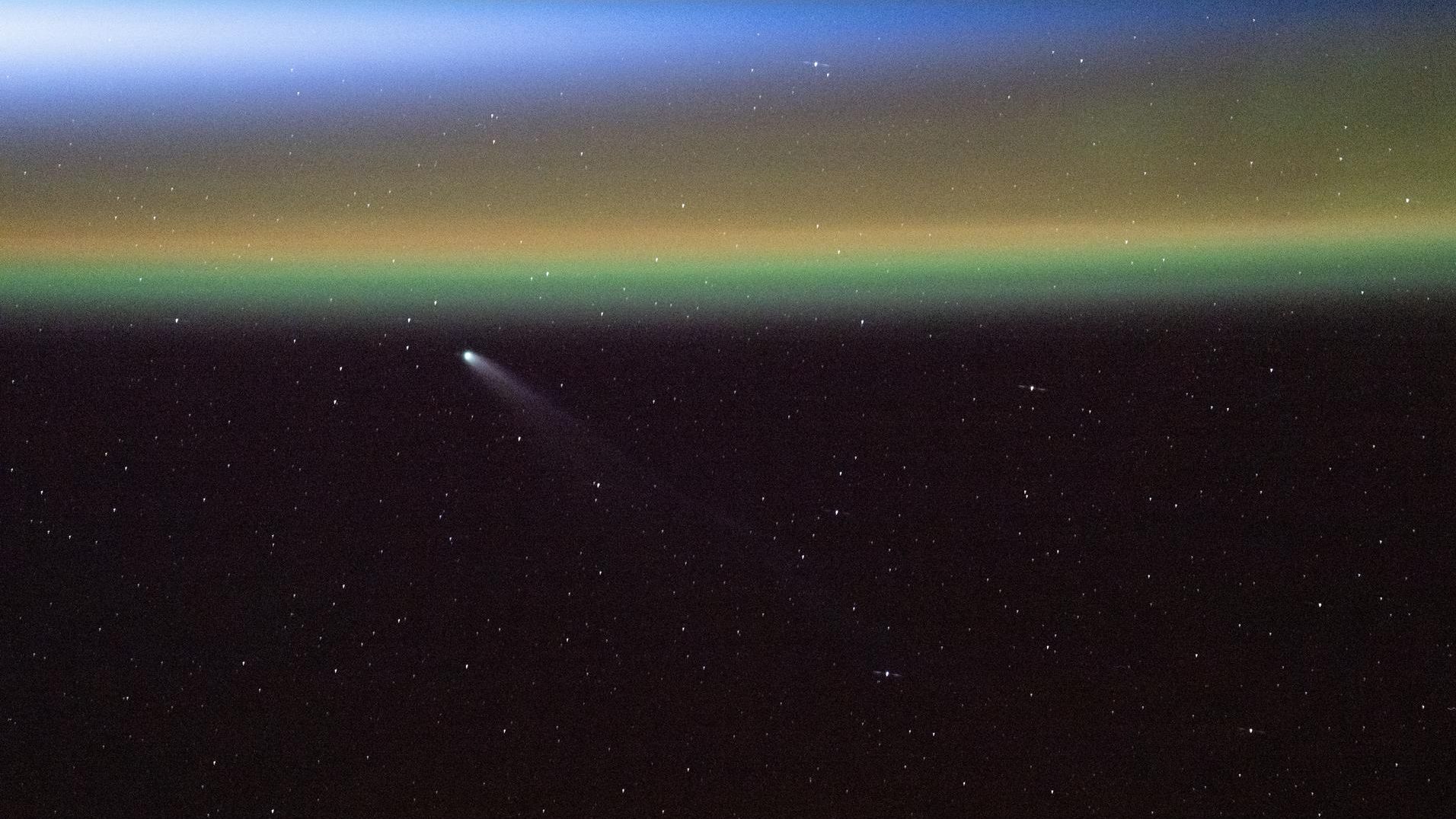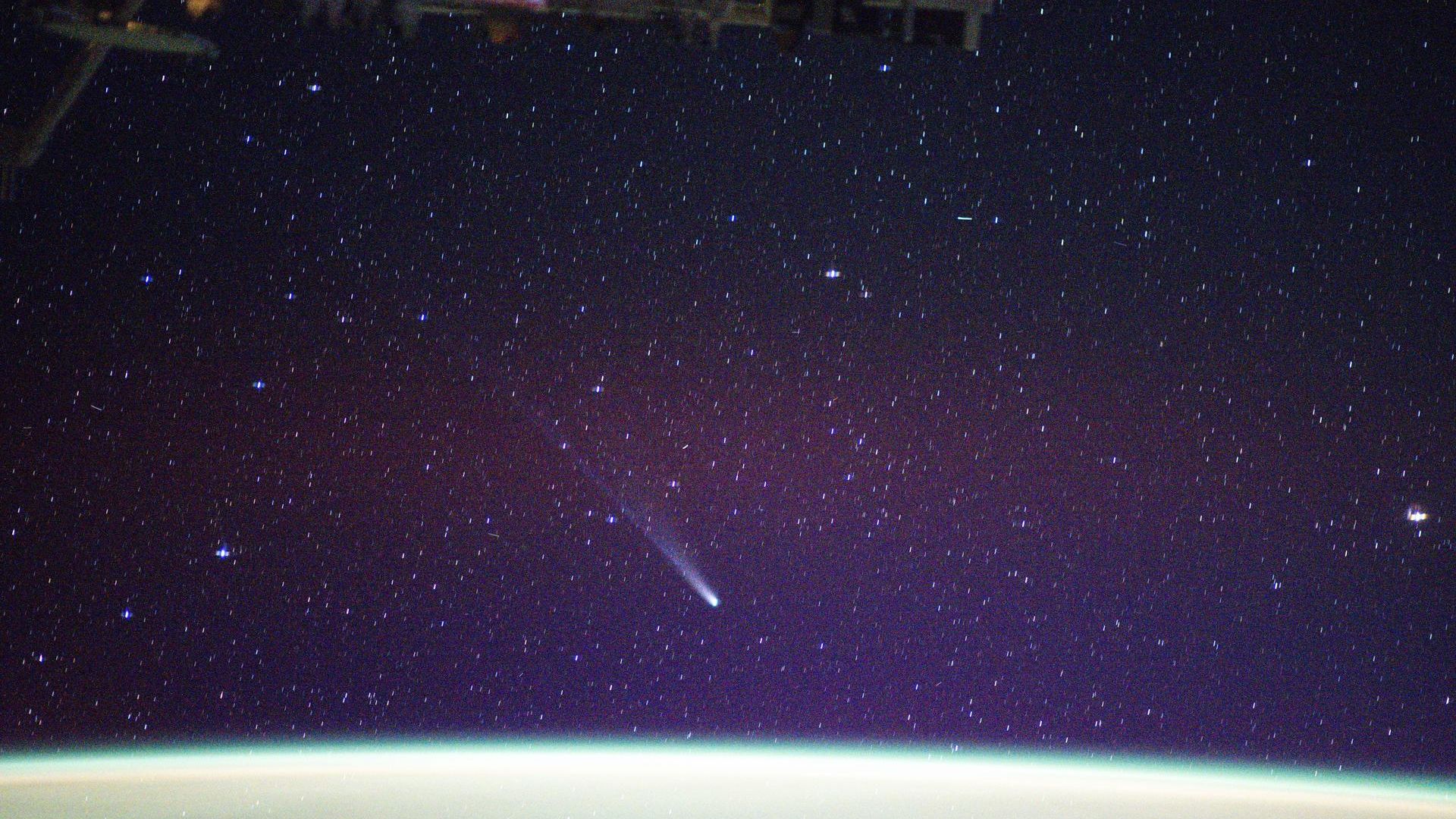'Like a mermaid swimming through a sea of auroras': ISS astronauts photograph 2 comets dancing above the northern lights
"That moment feels as enjoyable as heading out on a date."

Astronauts orbiting Earth recently photographed not one but two comets while an aurora show danced below them.
The International Space Station (ISS) Expedition 73 crew took several pictures of comets Lemmon (C/2025 A6) and SWAN (C/2025 R2) in recent weeks that were just posted to NASA's website and social media pages after the end of the long government shutdown.
"Comets Lemmon and SWAN soar millions of miles away from Earth, beaming with auroras and airglow, in these celestial images from the orbital outpost captured in October," NASA officials wrote on the ISS X feed on Wednesday (Nov. 18).
Comets are small bodies made of ice and dust; when they approach our sun, radiation pressure and heat give them spectacular tails. Auroras are light shows that happen when charged particles from the sun interact with Earth's atmosphere and magnetic field, while airglow is luminescence caused by chemical reactions high in the atmosphere.
NASA didn't say who on the crew took the photos, but they look very similar to images taken by Japan Aerospace Exploration Agency (JAXA) astronaut Kimiya Yui. Yui, unlike the NASA crew, was able to keep posting on social media channel X during the shutdown. (The NASA astronauts were allowed to perform only essential duties during the shutdown, such as ISS science and maintenance.)
Yui provided descriptions of his photos as well. "You can … distinguish between the two types of tails: ion and dust," Yui wrote (in Japanese; translation by xAI's Grok tool) on Oct. 20 of a Lemmon image with the comet backdropped by a starry, bluish-purple sky. (NASA posted a similar image from that same day on its website.)
More images came quickly. "After a busy day comes to an end, I've been continuing to take photos to soothe my fatigue. Lately, my source of healing has been Lemmon-chan, I suppose?" Yui posted on X with a series of images on Oct. 22. "I find myself thinking things like, 'What kind of expression will you show me today, I wonder?' and heading toward the window, and that moment feels as enjoyable as heading out on a date."
Breaking space news, the latest updates on rocket launches, skywatching events and more!
Yui sent out another image series on Oct. 21, noting changes in Lemmon's brightness and tail — as well as changes in Earth's atmosphere. Both the Oct. 21 and Oct. 22 photo sets on Yui's feed are similar to an Oct. 23 image on NASA's website.
Then, on Oct. 24, Yui found Lemmon appearing to melt into a spectacular aurora of green and yellow light, which looks like an entry on NASA's image website. Lemmon was 57.2 million miles (92.1 million kilometers) from Earth and the ISS was above Fargo, North Dakota when the image was taken.
"It was just like a mermaid swimming through a sea of auroras," Yui said of Lemmon. He added the show was "too magnificent" to use the familiar "chan" honorific when referring to Lemmon, so he chose to adopt the more formal "Lemmon-san."
That same day, Yui pivoted his attention to what NASA identifies as Comet SWAN, which was about 27.2 million miles (43.8 million km) from Earth at the time. "As the comet approaches the sun, the opportunities to photograph it from the ISS have become very short," Yui noted of the image, which shows SWAN floating above green and yellow bands of airglow off the coast of Newfoundland and Labrador, Canada.
It's rare to have two bright comets visible in the sky at roughly the same time, and especially rare for them to peak in brightness so close to each other: Lemmon and SWAN both were at their brightest around Oct. 20 and Oct. 21.
Lemmon was discovered in January by University of Arizona astronomer David Carson Fuls in images from the Mount Lemmon Survey, using the university's eponymous telescope near Tucson. SWAN was found in September by Ukrainian amateur astronomer Vladimir Bezugly using images from the Solar Wind Anisotropies (SWAN) instrument on the European Space Agency's space-based Solar and Heliospheric Observatory (SOHO).

Elizabeth Howell (she/her), Ph.D., was a staff writer in the spaceflight channel between 2022 and 2024 specializing in Canadian space news. She was contributing writer for Space.com for 10 years from 2012 to 2024. Elizabeth's reporting includes multiple exclusives with the White House, leading world coverage about a lost-and-found space tomato on the International Space Station, witnessing five human spaceflight launches on two continents, flying parabolic, working inside a spacesuit, and participating in a simulated Mars mission. Her latest book, "Why Am I Taller?" (ECW Press, 2022) is co-written with astronaut Dave Williams.
You must confirm your public display name before commenting
Please logout and then login again, you will then be prompted to enter your display name.


